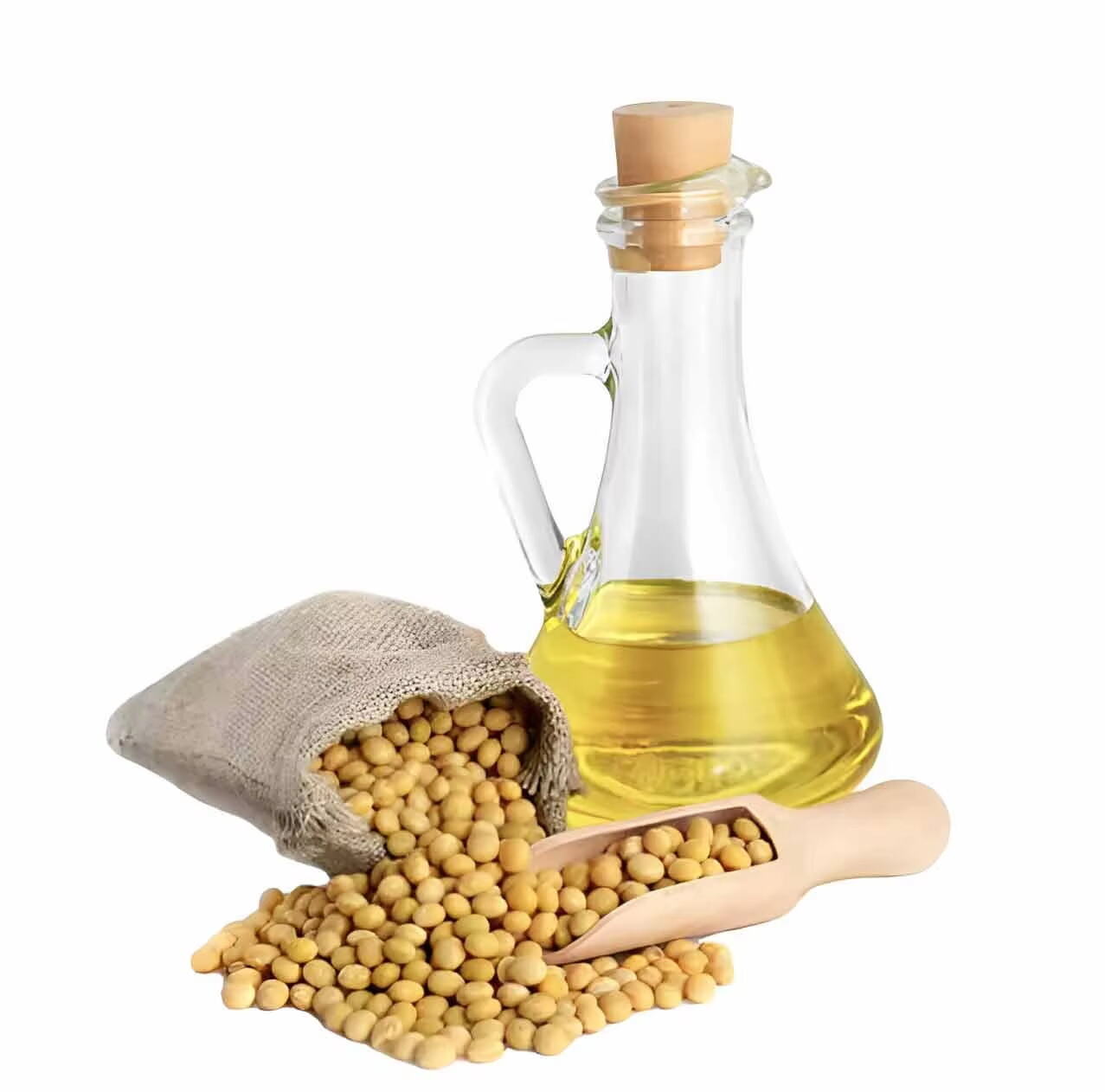Introduction: Understanding the GMO vs Non-GMO Soybean Oil Debate
The debate over GMO and non-GMO soybean oil is gaining traction in the food industry due to its widespread implications. Soybean oil is used extensively in processed foods and cooking, leading to significant interest in its genetic makeup and production methods. As GMO soybean oils become prominent, discussions around their environmental impact, perceived health benefits, and ethical implications are becoming more common. Conversely, non-GMO soybean oils are often seen as healthier and more sustainable, appealing to consumers keen on natural food sources.
However, misconceptions abound in discussions surrounding GMO and non-GMO soybean oils. Some believe that GMO oils are inherently unsafe due to the pesticides used in their production, while others see non-GMO oils as devoid of negative impacts. The reality is nuanced and requires careful consideration of both environmental and health factors. A comprehensive understanding is essential to navigate this complex issue, and our exploration of facts and misconceptions will help illuminate the debate.
Source of Raw Materials: Seed Origin and Farming Methods
Genetic Modification and Seed Development
Genetic modification in soybean seeds involves advanced scientific techniques designed to enhance crop traits. These techniques include recombinant DNA technology, which enables scientists to introduce beneficial genes directly into the soybean genome, often to improve resistance to herbicides or pests. This process starkly contrasts with traditional breeding methods, where genes are introduced more randomly through cross-pollination. Studies have shown that genetically modified (GMO) seeds can lead to higher crop yields and robust pest resistance, which can be crucial for meeting increasing food demands. For instance, the USDA reports that approximately 95% of soy grown in the United States is genetically engineered to withstand weedkillers. This genetic trait considerably boosts productivity for farmers, allowing them more effective control over weed growth without damaging their crops.
Farming Practices for GMO and Non-GMO Crops
The farming practices associated with GMO and non-GMO crops can differ significantly, particularly in terms of pesticide use and soil management. GMO soybean crops are often cultivated with herbicide tolerance, enabling farmers to apply weedkillers without harm to the plants. However, this has led to an increase in glyphosate use, a point of concern due to environmental and health risks cited by organizations such as the International Agency for Research on Cancer. In contrast, non-GMO farming typically employs diverse methods to manage pests, focusing on biodiversity and natural pest deterrents. Statistically speaking, a study conducted by the USDA reveals that GMO crops yield higher productivity but can lead to superweeds, promoting a reliance on stronger weedkillers such as dicamba. Moreover, while GMO farming is often backed by agrichemical corporations benefiting shareholders, non-GMO crops are gaining recognition for their sustainable farming approach.
Nutritional Value and Composition Comparison
Fatty Acid Profiles in Both Oil Types
One of the critical differences between GMO and non-GMO soybean oils lies in their fatty acid profiles. Non-GMO soybean oil typically boasts a more balanced composition of omega-6 and omega-3 fatty acids, which are essential for maintaining cardiovascular health. On the other hand, GMO soybean oil, primarily designed for higher yield and pesticide resistance, does not necessarily emphasize nutritional richness. According to various nutritional studies, the farming practices associated with GMO soybeans, such as increased pesticide usage, may impact the nutritional profile of the oils negatively. For example, GMO crops might require more intensive chemical management, potentially altering the beneficial lipid composition.
Vitamin E and Antioxidant Content Variations
When comparing the Vitamin E and antioxidant levels between GMO and non-GMO soybean oils, notable differences are evident. Non-GMO soybean oil is known for richer antioxidant properties, supported by the natural farming methods that minimize chemical interference. Scientific research suggests that processing methods crucially impact these nutrients; for instance, the aggressive heat-induced extraction processes associated with GMO soybean oil can degrade Vitamin E content and antioxidant compounds. Non-GMO oils, which are often processed using gentler techniques, tend to retain these vital nutrients more effectively, thereby offering a more robust nutritional profile beneficial for combating oxidative stress and promoting cellular health.
Processing Methods and Purity Levels
Chemical Refining of GMO Soybean Oil
Chemical refining is a common process used in the production of GMO soybean oil. This method involves several steps, including degumming, neutralizing, bleaching, and deodorizing, aiming to remove impurities such as phosphatides, free fatty acids, and pigments. Studies indicate that while these processes succeed in improving the oil's appearance and shelf life, they may also impact its nutritional content. Chlorophyll and carotenes are often reduced, which means fewer antioxidants are retained. Despite this, chemical refining ensures a high level of purity by significantly reducing contaminants and prolonging the oil's usability, albeit sometimes at the expense of nutritional retention.
Minimal Processing in Non-GMO Oil Production
In contrast, non-GMO soybean oil often undergoes minimal processing, which retains more of its natural qualities. Methods such as cold pressing or simple mechanical extraction help maintain the oil's nutritional integrity. These processes avoid the chemical interventions typical of GMO oil refinement, preserving beneficial compounds. As a result, non-GMO oils frequently demonstrate higher purity levels and rich nutritional profiles, containing more of the original vitamins, minerals, and natural oils. Data supports that non-GMO oils show better retention of nutrients compared to their GMO counterparts, offering a healthier alternative for consumers seeking minimally processed Products.
DNA Detection in Final Products
Testing for DNA in final oil products is a crucial step in ensuring transparency and consumer safety. Techniques such as polymerase chain reaction (PCR) are widely used to detect trace amounts of GMO DNA in soybean oils, providing accurate results. These methodologies are part of regulatory procedures designed to maintain high transparency standards. By conducting DNA tests, regulatory agencies can uphold policies that protect consumer interests while fostering trust in non-GMO products. This meticulous approach ensures that consumers are informed and the oil products they choose meet safety standards.
Taste, Smoke Point, and Culinary Performance
Flavor Neutrality in High-Heat Cooking
In high-heat cooking scenarios, flavor neutrality is a crucial factor, particularly for soybean oils. Both GMO and non-GMO soybean oils are often assessed for their taste profiles, as these can significantly impact culinary outcomes. Non-GMO soybean oil tends to be preferred for its cleaner flavor, which allows chefs to retain the essence of other ingredients without interference. Expert opinions often highlight the subtle taste of non-GMO oil, earning it a favorable reputation among chefs and Home cooks. On the other hand, GMO soybean oil can have a slightly processed taste, which might not suit all culinary applications. Taste tests conducted by culinary experts often reveal preferences for non-GMO versions due to their ability to maintain a neutral palate during cooking, thereby enhancing the overall dish quality.
Sensory Differences in Raw Applications
When used in raw applications like dressings or dips, the sensory differences between GMO and non-GMO soybean oils become more pronounced. Non-GMO soybean oil is often praised for its natural aroma and smooth texture, making it an excellent choice for salads and raw dishes. Consumer preference surveys frequently indicate a favorability towards non-GMO options, citing their lack of artificial aftertaste and superior freshness. Expert testimonials corroborate this, suggesting non-GMO oils provide more authentic flavor profiles that cater to health-conscious consumers. Conversely, GMO soybean oil can sometimes impart a slight residual taste that may not blend seamlessly with the freshness desired in raw culinary applications. Overall, the sensory qualities of non-GMO soybean oil align more closely with consumer expectations in raw food scenarios, ensuring a more delightful and wholesome experience.
Consumer Preferences and Market Trends
Perceived Health Risks of GMO Ingredients
The public perception around the health risks of GMO ingredients, especially in products like soybean oil, often influences consumer choices. Studies indicate a significant portion of consumers are concerned about potential health effects associated with GMOs. According to a survey by the Pew Research Center, approximately 51% of adults believe that consuming GMOs is bad for health. This statistic underscores the prevalent apprehension and highlights an urgent need for continued education and transparent communication from producers about GMO and non-GMO options.
Labeling Regulations and Transparency Demands
Current labeling regulations play a crucial role in shaping consumer decisions regarding GMO and non-GMO oils. In the United States, the National Bioengineered Food Disclosure Standard mandates the labeling of foods containing GMOs. However, the effectiveness and clarity of these labels often come into question. Advocacy groups such as the Non-GMO Project work tirelessly to promote greater transparency, urging for more informative labeling that empowers consumers to make educated choices. Their efforts underscore the growing consumer demand for transparency and the importance of clear, accurate labeling in the food industry.
FAQ
What are the main differences between GMO and non-GMO soybean oils?
GMO soybean oils are genetically modified to improve yield and pest resistance, while non-GMO oils maintain their natural traits. Non-GMO oils often have better nutritional profiles with more balanced omega fatty acids and antioxidants.
Why do some consumers prefer non-GMO soybean oil?
Many consumers prefer non-GMO soybean oil for its perceived health benefits, natural farming methods, and minimal processing, which helps maintain nutrients and flavor.
Are there any health risks associated with GMO soybean oil?
Concerns about GMO soybean oil include increased pesticide use and changes in nutritional content, though scientific opinions vary. Transparency and accurate labeling are crucial for informed consumer choices.
How is the processing of GMO and non-GMO oils different?
GMO oils typically undergo extensive chemical refining, while non-GMO oils use minimal processing methods like cold pressing, preserving more natural nutrients and qualities.

 EN
EN
 DA
DA
 AR
AR
 NL
NL
 FI
FI
 FR
FR
 DE
DE
 EL
EL
 HI
HI
 IT
IT
 JA
JA
 KO
KO
 NO
NO
 PL
PL
 PT
PT
 RU
RU
 ES
ES
 SV
SV
 TL
TL
 ID
ID
 SR
SR
 UK
UK
 VI
VI
 HU
HU
 TH
TH
 TR
TR
 FA
FA
 AF
AF
 MS
MS
 GA
GA
 MK
MK
 HY
HY
 KA
KA
 BN
BN
 LA
LA
 MN
MN
 NE
NE
 MY
MY
 KK
KK
 UZ
UZ
